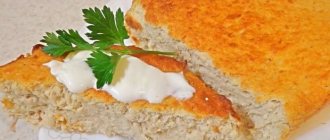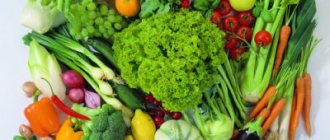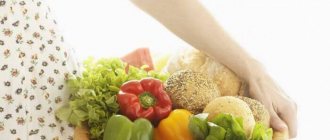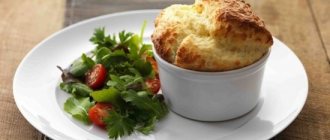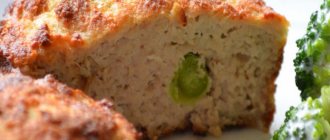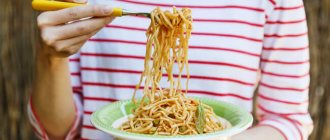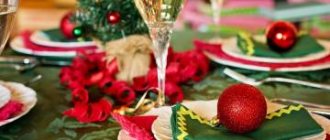Gastroenterologists assign a significant place to dietary nutrition in the treatment of pancreatitis. The pancreas needs to “restart”, and this can only be done by sparing the gastrointestinal tract as much as possible.
Therefore, it is very important to know the nuances of proper organization of the diet and not to consume prohibited foods for pancreatitis.
General principles of diet for pancreatitis
Organizing proper nutrition for a problem pancreas consists of simple rules:
- Food is processed mechanically. All solid products are well boiled, crushed, and pureed.
- Food is prepared only by boiling, steaming or in a slow cooker. It is unacceptable to fry, smoke, dry, pickle, or preserve anything.
- Overeating is prohibited. The stomach is loaded in small portions, but regularly. The ideal diet plan is to eat every 3-4 hours, and 2 hours before bedtime, allow yourself only a glass of water or herbal infusion.
- All products must be fresh. Vegetables and fruits are ripe. Meat – not defrosted. Milk - not the last day in the specified production period.
- Food is taken at the optimal temperature – no more than 50°C, but not less than 20°C. You should not eat hot or cold food directly.
You will have to resolutely give up bad habits. We are not talking only about nicotine or alcoholic beverages (they are out of the question in case of pancreatic diseases). You need to reconsider your tendency to have chaotic snacks - on the run, dry food or at night.
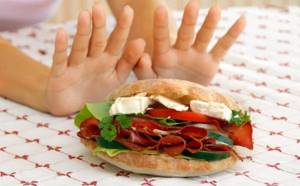
Main conclusions
Properly prepared cottage cheese soufflé will be an excellent addition to your diet. It has low calorie content, normalizes digestion, and prevents the increase in fat. When preparing a low-calorie dessert, follow these recommendations:
- Choose fresh cottage cheese with a pasty consistency, white-cream color, with a pleasant sour aroma and taste. Optimal fat content is from 4 to 9%.
- The remaining ingredients of the dietary dessert should be low-calorie.
- Complete the dish with fruits, berries, vegetables, nuts, dried fruits, etc.
- Beat the whites separately from the yolks, and then carefully fold the foam into the base.
- If you want to preserve maximum nutrients in the soufflé, then cook it with gelatin or steam it.
Thanks to a tasty and low-calorie dessert, the diet will not cause stress, and proper nutrition will become a habit.
Share original recipes for dietary cottage cheese soufflé in the comments. Perhaps your recipe will help someone lose weight.
What not to eat with pancreatitis: prohibited foods
Some products may have a double "reputation". For example, low-fat cottage cheese or 1% kefir are seemingly ideal dietary foods. But with gastritis with high acidity, milk can cause harm. Whether or not one product can be used often depends on the period of the disease (remission, attack, chronic course) or concomitant diseases.
However, there is a list of foods and dishes that are strictly forbidden to eat for any form of pancreatitis:
- All fresh baked goods, all types of pies, cakes, buns.
- Chocolate products, caramel, condensed milk, ice cream, nuts, figs, dried apricots.
- All legumes.
- Types of fatty, rich first courses are excluded - borscht, rassolnik, mushroom soup. Cold dishes such as beetroot soup or okroshka are also prohibited.
- You need to forget about fatty fish, poultry and meat - especially pork and lamb. All smoked sausages, canned food, and dried fish are excluded.
- If you have pancreatitis, do not eat fried or hard-boiled eggs.
- Sour cream, yoghurt, margarine, fatty milk, cottage cheese and butter are excluded from dairy products.
- Porridge is not cooked from pearl barley and millet.
- As for vegetables, they forget about radishes, cabbage, peppers, spinach, onions and garlic.
Naturally, any fast food and spicy food is prohibited. Taboos are imposed on coffee, soda, grape and grapefruit juices.
Curd soufflé in the microwave
You can simply and quickly prepare cottage cheese and apple soufflé in the microwave using small portion molds.
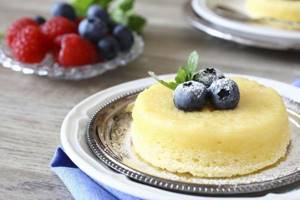
You will need to take the following products:
- 2 packs of cottage cheese;
- egg;
- apple;
- sugar;
- cinnamon.
How to make a quick dessert in the microwave:
- Grind the cottage cheese in a sieve so that no lumps remain.
- Beat the egg with granulated sugar and then mix with the cottage cheese.
- Grind the apple on a fine grater, add it to the prepared mass, add cinnamon and mix.
- Place the mixture in the molds, leaving about a quarter of free space, and then place the containers in the microwave and turn on maximum power for 8 - 12 minutes (depending on the type of device).
Advice. To make the dessert especially tender, you need to place a small cup filled with water between the molds and cover the containers with a special microwave-safe cap.
What can you eat with pancreatitis: list of products
Despite the impressive list of prohibited foods, there is still a lot of room for good nutrition even with pancreatitis.
| Flour products | Yesterday's bread (preference – whole grain, rye, wheat), homemade crackers, dryers, biscuits, crispbread. During periods of remission - noodles and spaghetti (up to 170 grams per serving). |
| Cereals | Rice, buckwheat, oatmeal, semolina. |
| Types of vegetables and herbs | Vegetables include potatoes, pumpkin, beets, carrots, eggplants, and zucchini. You can add 1 tbsp daily. l. chopped celery, parsley and dill. |
| Fish dishes | You can eat the pulp of varieties with the lowest fat content (hake, cod, pike perch), boiled or cooked in a slow cooker. Fish meatballs and broths. |
| Seafood | Sea kale. |
| Meat menu | For preparing broths, steamed cutlets and meatballs, preference is given to chicken, rabbit, turkey, and lean veal. |
| Fermented milk | Kefir, low-fat cottage cheese, cheese are not prohibited with normal or low stomach acidity. |
| Eggs | Steamed omelette made from chicken and quail eggs. |
| Oil | Refined sunflower, olive, flaxseed, pumpkin. In stable remission - creamy (no more than 30 grams per day). |
| Fruits | Bananas, baked apples. |
| Bee products | Honey, propolis, royal jelly. |
| Spices | Sesame, fennel, cumin, turmeric, cloves. |
What vegetables can you eat?
You don’t have to be afraid to eat potatoes, carrots, and beets. Zucchini and pumpkin are also considered light vegetables for pancreatitis and gastritis. If the acidity of the stomach is not increased, cauliflower is allowed.

You will definitely have to give up the following vegetables and types of greens:
- pepper (bell pepper, salad, hot);
- daikon and radish;
- garlic and onions (onions and greens);
- sorrel and lettuce;
- rhubarb and horseradish.
During periods of remission, with great caution, allow yourself small portions of tomatoes and cucumbers. Naturally, you need to be sure that the vegetables are not full of nitrates and have not been stored in warehouses for a long time. It is best to buy vegetables from village markets during the appropriate season.
What fruits or berries can you eat?
If you have pancreatic disease, you can eat:
- Non-sour apples and ripe pears. The best ones are baked and pureed. The skin and core are removed. Compotes made from dried fruits with sweeteners (sorbitol or xylitol) are good.
- Bananas. Already 5–7 days after the exacerbation.
Chocolate-curd soufflé
This is another option for making curd soufflé without baking.
To work you will need the following products:
- a pack of cottage cheese;
- 5 tablespoons of sour cream;
- 30 – 40 g cocoa powder;
- 20 g gelatin;
- sugar and vanilla to taste.
Diet for acute pancreatitis
The diet for acute inflammation of the pancreas involves a smooth transition from hunger to an expanded table No. 5:
- During the first day, nutrients enter the body exclusively through the parenteral route. If you manage to stop nausea and vomiting, give liquids at room temperature to drink - clean water, rosehip decoction, unsweetened tea - no more than 150 ml every 4 hours.
- On the 2nd–3rd day you can already take liquid, warm, homogeneous food - slimy porridge, puree soup, berry jelly with a sweetener. Meals during this period are small and frequent, every 3 hours.
- After about a week, the menu will be diversified with compote, fruit puree, broth soup with pureed vegetables, steamed omelet, 1% kefir, low-fat cottage cheese, baked apples, steamed meat and fish cutlets.
- A month after an acute attack, it is already safe to eat food without thoroughly rubbing it during preparation. Small pieces of fresh fruit, boiled fillets of meat, fish, poultry, and day-old bread are thoroughly chewed during the meal. Single servings are becoming larger, up to 600 g.
All new ingredients are introduced gradually, no more than one per day.
Dessert with bananas
The dessert becomes nutritious and tasty if you add bananas to it.
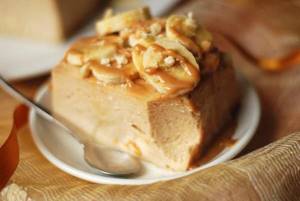
For cooking you will need the following products:
- a pack of cottage cheese;
- small banana;
- egg;
- 30 g semolina;
- a tablespoon of sour cream.
- granulated sugar to taste.
Making banana dessert:
- Mix semolina with sour cream and leave to swell.
- Grind the cottage cheese through a sieve and finely chop the bananas.
- Combine the prepared ingredients, add the egg, sugar and mix the mass thoroughly.
- Pour the mixture into the mold and place it in the oven.
The dish bakes quickly, it can be removed after a quarter of an hour.
The need to follow a diet
A competent diet and patient discipline are the basis for successful treatment of pancreatitis. You will have to follow a strict diet for many months. But, if you are patient, this path provides a chance to restore full functioning of the pancreas and even cure pancreatitis forever.
Dietary nutrition is the main aspect in the complex therapy of pancreatitis. Without this, it is impossible to stop the intoxication of the body by pancreatic enzymes. A break in the functioning of the gastrointestinal tract and the subsequent gentle regime give time to stop pathological processes, prevent pancreatic juice from starting to digest the pancreas itself and lead to irreversible processes in the tissues.
Consequences of not following the diet
Pancreatitis easily develops into a stomach ulcer, as bleeding opens in the damaged mucosa. And due to the fact that the outflow of bile is impaired, the liver is affected and there is a risk of developing hepatitis.
Refusal to follow the diet is fraught with other serious complications with the development of concomitant diseases:
- duodenal obstruction;
- gastritis;
- cholecystitis;
- duodenitis;
- glb (cholelithiasis);
- thrombosis of the splenic veins;
- formation of cysts and malignant tumors.
In addition, a frequent companion to chronic pancreatitis is

